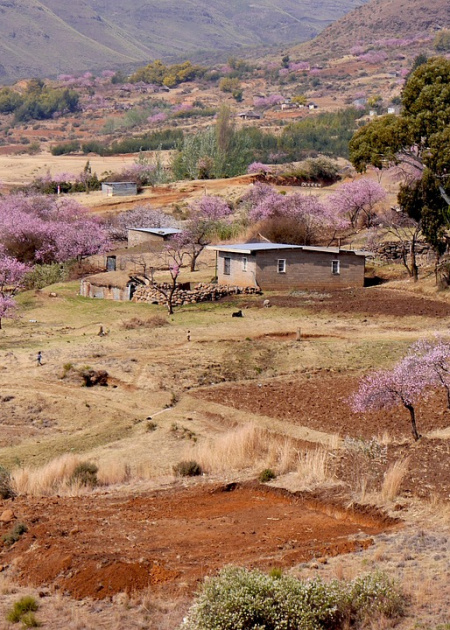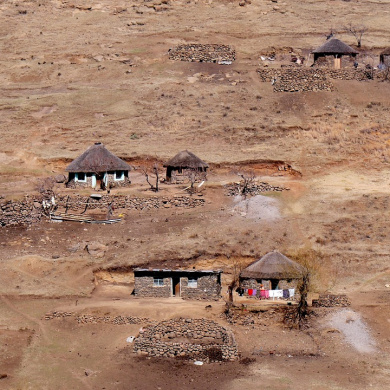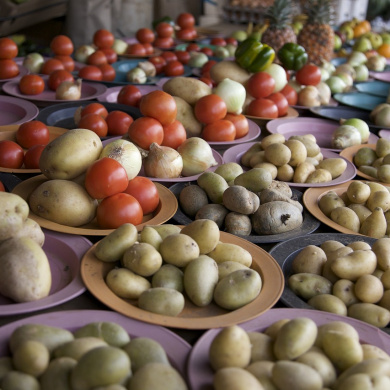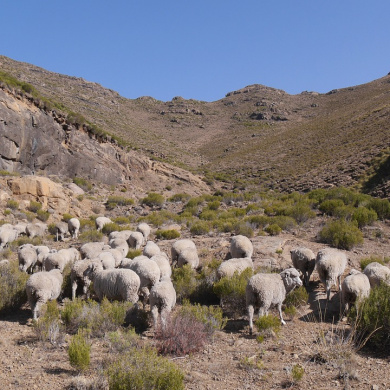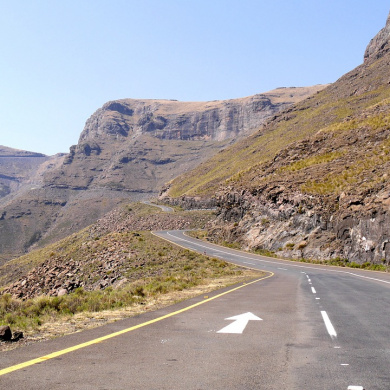Cost of living
It is generally very inexpensive to live in Lesotho. Costs of basic items such as food, clothing, and accommodation are much lower compared to many other countries. Additionally, utilities such as water, electricity, and internet are also more affordable, making the overall cost of living quite low.
Why travel to
Lesotho is a small southern African nation filled with rugged mountains, open plains and rolling hills. This stunningly beautiful countryside is ideal for vacationers looking for a unique travel experience. Visitors can enjoy a range of activities from adrenaline-fueled adventure sports, such as skiing and snowboarding on the Maloti Mountains and trekking, to more relaxed pursuits, such as boating on the Katse Dam and exploring the villages, monuments and waterfalls that are dotted around the country. Lesotho is also a great place to appreciate the wild and diverse animal life, including the rare Mountain Zebra, as well as experiencing the vibrant traditional culture of Lesotho’s people.
Safety
Yes, it is generally safe to travel to Lesotho. However, you should take certain precautions such as avoiding large gatherings, being aware of your surroundings and keeping up to date on local news and events.
Places to visit
- Ts’ehlanyane National Park – Known for its spectacular mountain ranges, towering cliffs, gorges, waterfalls and rock formations, this protected national park is located in the northwest of Lesotho and covers an area of 2,082 square kilometres.
- Maletsunyane Falls – This spectacular waterfall is located close to the town of Semonkong, in Lesotho, and is 200 metres tall, making it one of the highest waterfalls in Africa.
- Thaba-Bosiu – Located in Maseru district, Thaba-Bosiu is revered as the birthplace of the Basotho people, one of the most recognised ethnic groups of Lesotho. This historical site is home to the graves of King Moshoeshoe I, the founder of Lesotho, and his successors.
- Makhaleng River – The Makhaleng River, a tributary of the Caledon River, is a marvellous spot for activities such as boating, fishing, and birdwatching.
- Katse Dam – Positioned in the Maloti Mountains, the Katse Dam is one of the biggest achievements of Lesotho’s civil engineering. It supplies electricity to 30-50% of the country’s population and is an important water resource for the region.
- Sehlabathebe National Park – This is one of Lesotho’s most visited parks, due to its rich variety of scenery, sweeping landscapes and ease of access.
- Basutoland National Monument – The Basutoland National Monument is located in the capital city of Maseru and is dedicated to the Basotho people. This impressive structure is a must-see when visiting the country.
Food to try
- Pap-tju-tha: Pap-tju-tha is a maize-based porridge, served with a tomato and onion sauce. It is considered one of the major foods in Lesotho and is a traditional dish.
- Putu: Putu is a steamed dumpling made from grated potatoes, usually mixed with breadcrumbs and flavoured with spices. This is a popular street food dish that is usually served with tomato chilli sauce.
- Morogo Natwetweng: This is a traditional stew made with wild spinach, onions, garlic and green pepper. It is usually served with phutu or pap and provides a warming and nutritious dish.
- Sheep Tail: Another Lesothan speciality, the sheep tail is slow cooked with a tomato, onion and garlic base and is often served with rice.
- Chakalaka: Chakalaka is a spicy side dish made with vegetables such as cabbage, beans and carrots. This dish is often served with bread or pap.
Souvenirs
- Basotho Blanket: A traditional, hand-woven blanket made of wool.
- Rope Sandals: Woven leather and rubber sandals, which are a popular item of footwear in Lesotho.
- Batlokoa Wool: Hand-spun, hand-dyed wool, ideal for simple hats and scarves
- Pickaxe: A traditional tool for mining, farming and construction, usually made from wood and iron.
- Culture Pot: A hand-carved, painted pot depicting the country's culture.
- Basotho Beadwork: Hand-crafted necklaces, earrings and other jewelry crafted with glazed glass beads.
- Traditional Masks: Hand-carved wooden masks, often used during traditional ceremonies.
- Traditional Paintings: Hand-painted works of art, often of Basotho villages, wildlife, and landscape.
- Basket Weaving: Hand-woven baskets made from natural materials and dyed wool.
- Basotho Hat: A traditional hat, made from woven grass or straw and worn by Basotho males.
